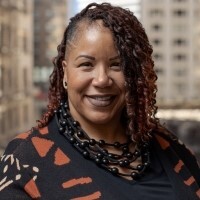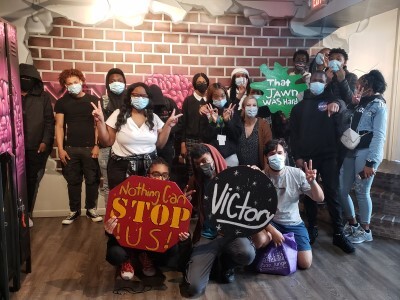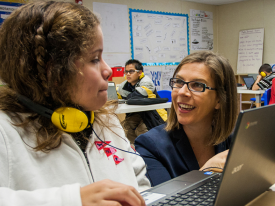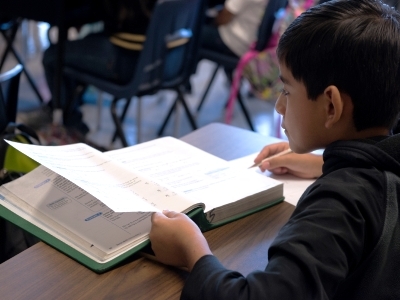Educating at the Intersection of Purpose and Passion—Love Is the Answer
Topics
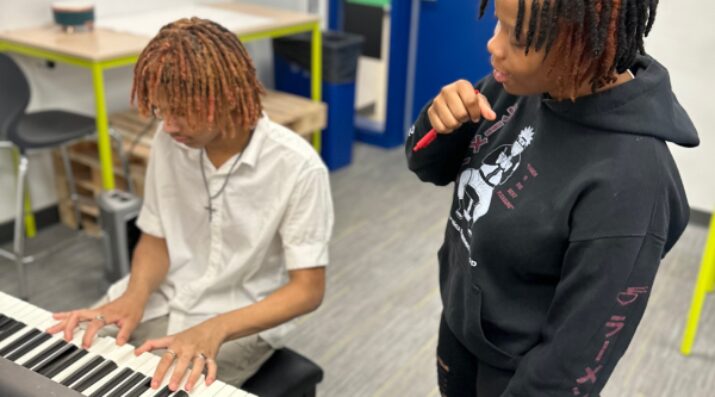
Together, educators are doing the reimagining and reinvention work necessary to make true educational equity possible. Student-centered learning advances equity when it values social and emotional growth alongside academic achievement, takes a cultural lens on strengths and competencies, and equips students with the power and skills to address injustice in their schools and communities.
Would would it look like if teaching started with purpose, passion, love, and equity?
Love, Equity, and the intersection of Purpose & Passion—these core values guide me as a leader, as an educator, and most clearly as an individual. When I was growing up, the teaching profession was deeply respected. Today, I believe we could use a rebrand—and I believe it starts with purpose, passion, love, and equity. How might we help educators and future educators understand that their impact can change the future of the world? How might we lead with equity as a lens? And effectively practice the difference between equity and equality? How might we start to turn the page from the pandemic and bring creativity back to classrooms?
As you reflect on the past school year and prepare for the next one, take some time to consider the following...
LOVE
Leading with love is deeply rooted throughout my upbringing, throughout my life, and as modeled after my maternal grandfather, who was my pastor growing up. He is the most amazing individual I’ve ever met—he inspired me to lead with love. He inspired me to be a leader, a teacher, someone who loves deeply.
My grandfather came from Yazoo City, Mississippi, by way of his father’s plantation, making a life and career for himself after his father had secured significant land and water rights. He left all of that to go pastor and even be itinerant for a while, doing the things that he needed to do to support people. He worked and lived with love and compassion for others, deeply invested in social justice, even hosting Dr. King in his home. Grandpapa was a model for how we should treat one another and his impact on my life is indelible. He was deeply committed to his faith, and to people—to see people do better, be better, feel better—and he modeled for me what it looks like to truly love—an essential component of holistic education.
If you don’t LOVE kids, really love them, it’s best you find the door.
- Over the years, I have experienced iteration upon iteration of educational programs and curricula. What I am certain of is this: it is easier and more beneficial to do less with people who care than to throw paint at the wall and see what sticks with people who could care less about kids. Education isn't 9 to 5. Being an educator is a heart posture—it is more than a job.
- Adverse Childhood Experiences (ACEs) and resilience research shows that one positive relationship in school can change the trajectory of a child’s life. Be the one, regardless of your role.
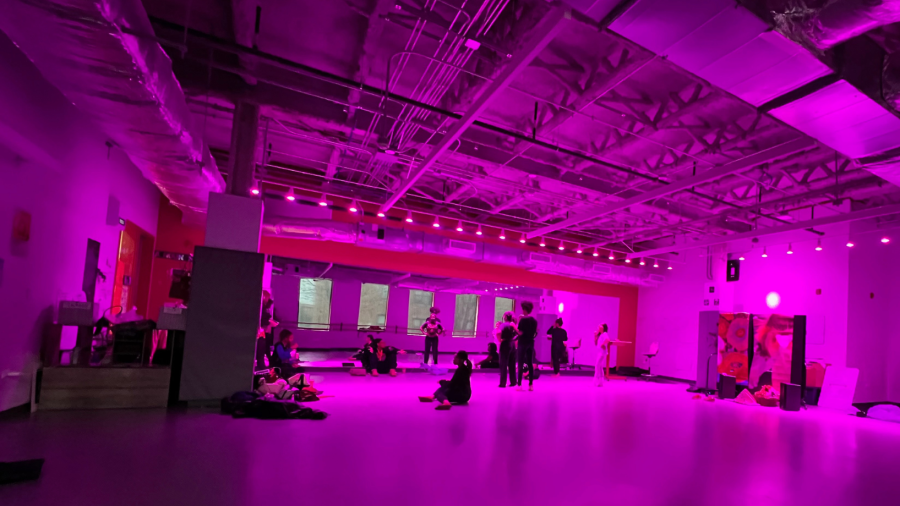
EQUITY
Equity is increasingly a weaponized word, but I’m defining it here as a rejection of equality as a norm, while providing the space, opportunity, and resources for everyone to be successful, despite actual or perceived barriers.
Equity work in education is not just about one classroom, one group of students. It’s so much more than that. At Art In Motion – Creative Arts School, we partnered with Academy Award and Grammy-winning artist, actor, and activist Common to bring arts education to the South Side of Chicago. Earlier this year, Common launched his Free to Dream campaign, focused on creating access for young people to find their dreams and clear the way for them to have access to education, jobs, wellness, and justice. True equity is about more than education; it’s about creating a sense of community, a purpose, a passion—for both our learners and ourselves. When we talk about being Free to Dream, it first points to barriers. What is standing in the way of our students achieving excellence? Social-emotional growth and development? Achieving their artistic potential? All of the many issues facing our kids point to equity. Funding. Support of the arts in schools. Where students come from, and the support they’ve received; how supported they feel. It’s all about equity.
Equity requires more from us. Our children require more from us. We need to build the necessary systems, to set the foundations and structures for students to receive what they need—to provide learners with the space to be able to dream. Like with the concept of in loco parentis, the governmental ideal, as educators, we’re acting in place of parents. For our children—for our future—in loco parentis assumes this responsibility for children in ways that the K-12 system doesn’t currently support.
When students have teachers who care about them, who love them and know them—and I mean really know them, genuinely—it transforms how they receive education. It allows them to be free to dream, to shift their future and their pathways, and ultimately we all benefit. It creates and impacts our collective future.
Learn who the students in your space truly are. Interrogate where you bring stereotypes and narratives.
- There is a trend in education (and in life) where people make assumptions about children. Consider their capacity for emotion, their potential for contributions, their awareness of the world around them in ways that are different from the adult world. I encourage you to cultivate a space where every voice is heard and appreciated for its individual value.
- Resist the temptation to indulge in the single story. Our learners are multilayered, multidimensional, deeply complex human beings. Regardless of what they have or have not been through or exposed to, reducing their identities or experiences to sensationalized narratives of trauma, poverty, or adversity only perpetuates societal stereotypes and fails to honor their full humanity.
If you find yourself in a position to make changes to policy, to acknowledge and address systemic inequities—DO IT.
- Address these inequities head-on by implementing policies and practices that promote fairness and access for all students, regardless of their background or identity.
- Not all educators are in the space to “address” inequities caused by history and ongoing systemic issues, but all are in the space to acknowledge that they exist. This acknowledgement goes a long way in determining the necessary flexibilities and absolutes in your specific space and is respectful of the needs and lived experiences of your students.
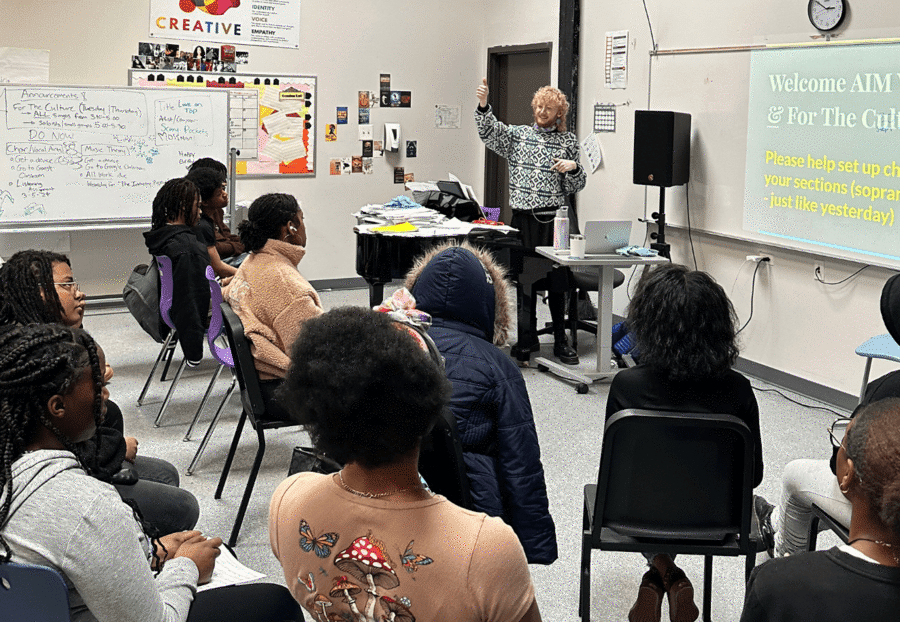
PURPOSE & PASSION
I am passionate about the arts, I always have been. It’s written into the core of my being, and that passion is what drives me. I also recognize the arts as my purpose—to teach, to lead, to inspire and be inspired. When I am truly feeling fulfilled, when I am most satisfied with education, when I am most joyful is when I am living at the intersection of my purpose and my passion.
Passion and joy are contagious. With all that you learn about your students and about yourself, let that passion and joy overtake and motivate you. Be the best you can be for your students, love them regardless of what is going on around you, and give in ways that are productive, empathetic, and impactful with high expectations, high support, and high challenge. I started my career in education nearly 30 years ago. I’ve worked with thousands of students over those years, and, in reflection, they have impacted me and shaped my experience in the same ways I imagine I have shaped theirs.
Commit to continuous reflection. Commit to your purpose.
- Whether you grew up with a proverbial silver spoon in your mouth or in the ‘hood, whether you identify as White, African American, or Latinx, it is imperative to recognize how your own experiences shape your perspective about your students and how they impact your relationships.
- True disruption of barriers requires an understanding of oneself and one's role in the system that has been created around us.
A Call to Act on Your Purpose and Passion
While it fuels my fire to do this work, I am simultaneously frustrated that there is so much work still to be done. As you close out this school year and plan for the next, slow down. Pause, reflect, and recommit to your purpose, remember your passion, dream. Whether you are in a classroom or leading a district, this is your call to action, to consider how your purpose and passion can make a difference for your school community and beyond. Unearth your educational purpose. Your passion. Your joy. Walk in it. Then share it with the world through love.
All photos of Art In Motion – Creative Arts School, courtesy of Distinctive Schools.

